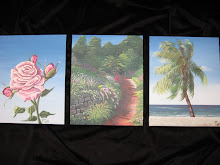In interior decorating, paint is the first step in the decorating process. For the faux painter, the anticipation of walking into a room and envisioning what it can look like, then executing the project, finalized with the “big reveal” to the client, is a mind blowing, gratifying accomplishment.
What is decorative painting? A process of taking paint and applying it to a surface in an endless variety of methods, to enhance it's appearance.
Picking a can of paint can strike fear in the hearts of many, but for a decorative painter, those are little cans of joy.
Originally from Christopher Lowell, an interior decorator and television personality, this list is in Mr. Lowell’s book 7 Layers of Design & Color Courage:
Layer # 1 is paint and architectural embellishments: Paint is the cheapest way to add warmth to your room. Oh yeah, don't forget to paint those ceilings. Architectural embellishments are moldings and other architectural items. I like to add these elements not only because they add value to homes, but also charm and substance.
Layer #2 is installed flooring: This is wall-to-wall installation, not area rugs which come later.
Layer #3 is high-ticket upholstery items: These are basically any oversized fabric covered piece. Here is a quick tip to remember when purchasing your items. Remember to focus on solid and textured fabrics rather than patterns. Locking yourself into a pattern can be a costly investment, which won't have any return.
Layer # 4 is accent: This is where you can have fun with accent fabrics for pillows, curtains, runners and yes, area rugs. These are the easier pieces to change from season to season or when updating is needed.
Layer #5 is non-upholstered furniture (or the workhorses): Without these workhorses of the room, like coffee, end and side tables, a room simply doesn't work.
Layer #6 is accessories: This is my favorite part. This is where you can inject personal items like photos, books and other merchandise.
Layer # 7 is plants and lighting: Shadow is important to the mood of the room as the light that creates it. Here's a tip, remember, as much lighting should come from the floor as from the ceiling. Plants under lit help make great shadows and add that important living element to the room.
Layer one is paint. Be bold and pick a color - not white or off white! With all the great do-it-yourself shows on TV, the "you can do it!" attitude, everyone is seeing the beauty of paint and the wonderous textures that can be achieved in their own decorating processes. Of major importance is to prepare the surface to ensure the technique will look its absolute best.
There are many, many painting possibilities within each of the following techniques and as the WallDreams Faux Painting and Murals Blog continues, we will go in depth on each topic as well as offer articles and paint stories.
Antiquing
Combing
Color Wash
Crackle
Decorative Plaster
Distressing
Faux - including stone, brick, marble
Frottage
Gilding
Inlay
Marbleizing
Murals
Patina
Ragging
Sponging
Stamping
Stenciling
Stipple
Strie
Trompe L'oeil
Venetian Plaster
We hope you stay tuned for upcoming posts, pictures and updates. Keep your brushes clean, and til next time,
Donna of WallDreams














No comments:
Post a Comment